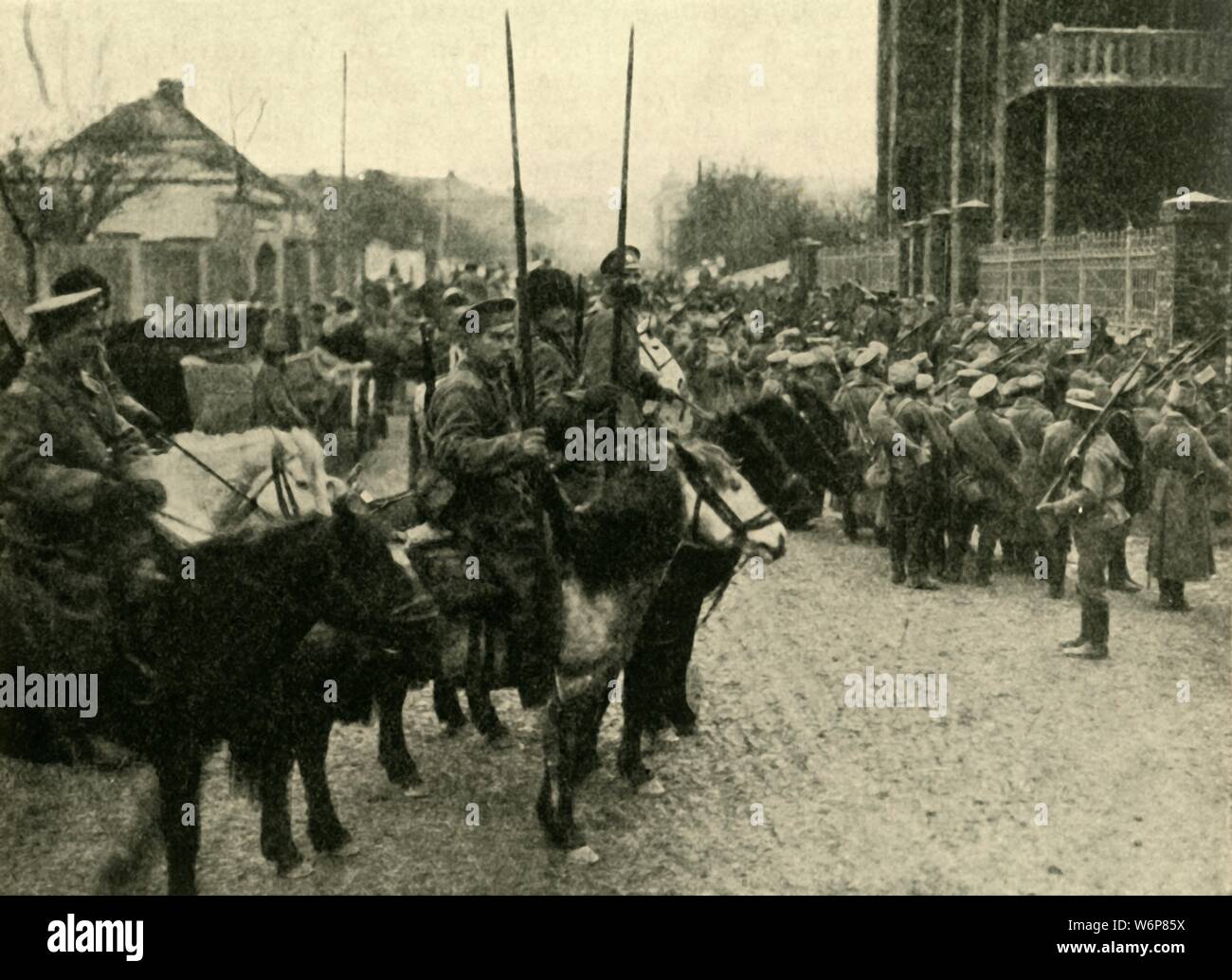

They were well fitted for maritime warfare by long continued habit. The Poles gave them the Trychtymirow, in Kiovia.

He was associated with four town counsellors, with the absolute power of life and death. They were governed by a prefect or hetman, whose sceptre was a reed, and who was chosen by acclamation in a tumultuous assembly. They lived by hunting and fishing, and gained their principal support for their wives and families by plunder. Their sole business was war and, when not engaged in actual service, they occupied themselves with athletic sports, preparatory for the field. Their residence was in those naturally fortified places which arc watered by the Dniester. They professed the religion of the Greek Church. They were principally of Russian origin, together with many criminal refugees from Poland, Germany, and other countries. Their war boats were sixty feet long, with ten or twelve oars on each side. Previous to the time of Batory, they generally mustered five or six thousand men. Their rendezvous was in the islands of the Dnieper and when winter approached, they returned to their homes. It was their business every season to make periodical naval expeditions against the Turks, and they frequently advanced within two leagues of Constantinople. Chevalier, very properly, compares them to the Francarchers, who were formerly established in France by Charles VII. They were only a military body, and not a nation, as some have erroneously supposed. All the inhabitants of the Ukraine, which means the frontier country, were, in the course of time, called Cossacks.

The Cossacks were the southern borderers of Poland, and like all other savages of their character, were continually carrying on an irregular and predatory war. In the reign of Sigismund I., they were first armed against the Tartars, under their commander and governor, Daszkiewicz, a Polish officer and from this time they continued unnoticed, until the time of Batory. These savages inhabited the islands and swamps of the Dnieper, which served as a barrier and common frontier between them and their warlike neighbors. It was that Cossack tribe called Zaporog, or Cosaci Zaporohenses, that was first reduced to military order in Poland. Batory was the first prince who reduced this formidable foe to some military order, in the latter part of the sixteenth century. One of the most powerful divisions of the Polish army was the Cossacks, or plunderers, as their name implies. In the reign of Batory, which commenced in 1575, the strength of the nation was augmented by the establishment of the first standing army, and the introduction of military tactics. All the army, at least those who fought on horseback, were styled nobles. Every palatinate, of which Poland proper contained eleven, was obliged to raise a certain number of cavalry within a stated time, to be subject to the king's orders. During the reign of Boleslas, between 11, the pospolite or militia of Poland was first established. Peace-making was no part of the business of the early Polish chiefs and the subsequent kings pursued the profession of their predecessors.Īs far back as history and tradition can trace the annals of the Poles, and their early predecessors, the profession of arms was their principal pursuit booty was their only reward, and their weapons the only baggage with which they encumbered themselves. As the state advances in civilization and refinement, the army becomes a subordinate branch of the government, and equally essential, whatever be the form of the government, and however savage or civilized the people. The business of war is the principal occupation of a barbarous people, especially in their early nomadic existence, as in Poland The government of such a rude people is uniformly arbitrary, organized and defended by a savage soldiery, and eventually yields to a military despotism.


 0 kommentar(er)
0 kommentar(er)
